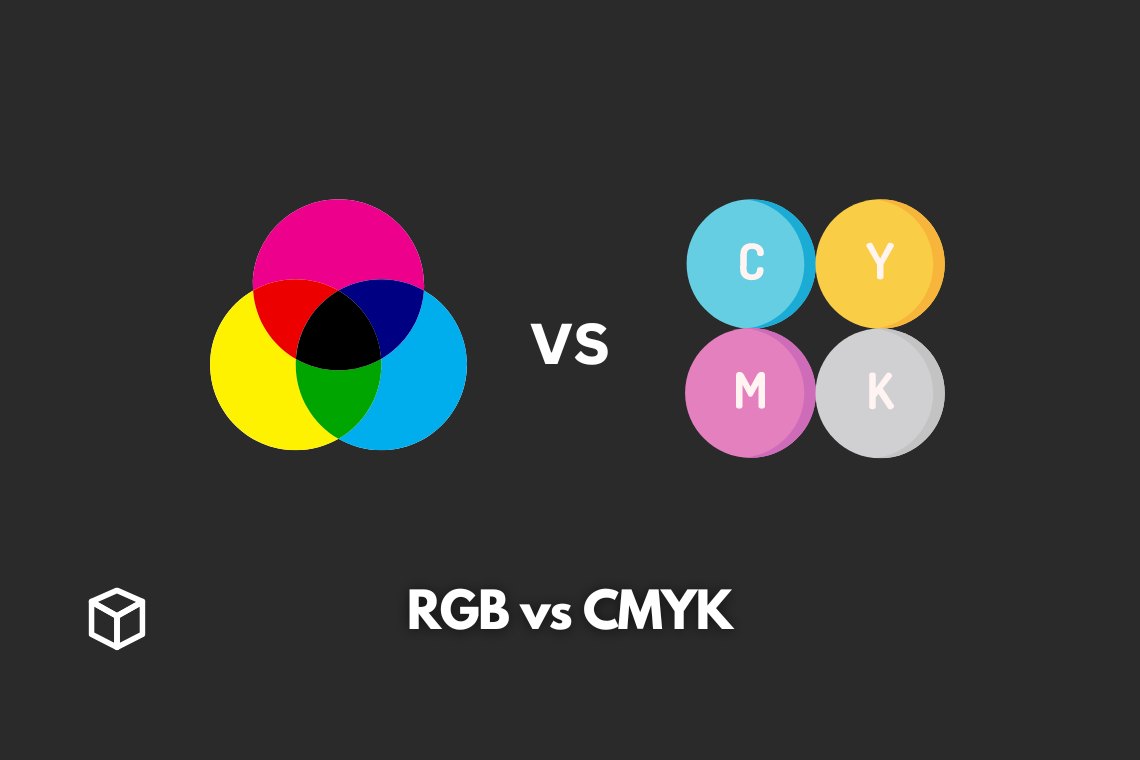RGB and CMYK are two different color models that are used in different contexts.
RGB, which stands for red, green, and blue, is used for electronic displays and digital images, while CMYK, which stands for cyan, magenta, yellow, and black, is used for printing.
In this article, we will explain the differences between the two color models, and provide examples of when to use each one.
RGB Color Model
RGB is a color model that represents colors as a combination of red, green, and blue light.
Each color is represented by a value between 0 and 255, and the resulting color is created by mixing different amounts of red, green, and blue light.
For example, pure red is represented by the value 255, 0, 0, while pure blue is represented by the value 0, 0, 255.
How RGB works
RGB colors are created by mixing different amounts of red, green, and blue light.
The more of a certain color you have, the brighter that color will appear.
For example, if you have a lot of red and no green or blue, the color will appear very red.
On the other hand, if you have equal amounts of red, green, and blue, the color will appear white.
Advantages and Disadvantages of using RGB
The main advantage of using RGB is that it is widely supported by electronic displays and digital cameras.
This means that any image or video that is created using RGB can be easily displayed on a wide variety of devices.
However, the main disadvantage of using RGB is that it is not suitable for printing, as the colors produced by RGB are not the same as the colors produced by ink or toner.
Examples of when to use RGB
RGB is typically used for electronic displays, such as computer monitors, televisions, and smartphones.
It is also used for digital images, such as photographs and graphics, that will be shared online or displayed on electronic devices.
CMYK Color Model
CMYK is a color model that represents colors as a combination of cyan, magenta, yellow, and black ink.
Each color is represented by a value between 0 and 100, and the resulting color is created by mixing different amounts of cyan, magenta, yellow, and black ink.
For example, pure cyan is represented by the value 100, 0, 0, 0, while pure black is represented by the value 0, 0, 0, 100.
How CMYK works
CMYK colors are created by mixing different amounts of cyan, magenta, yellow, and black ink.
The more of a certain color you have, the brighter that color will appear.
For example, if you have a lot of cyan and no magenta, yellow, or black, the color will appear very cyan.
On the other hand, if you have equal amounts of cyan, magenta, yellow, and black, the color will appear black.
Advantages and disadvantages of using CMYK
The main advantage of using CMYK is that it is specifically designed for printing, which means that the colors produced by CMYK are more accurate than the colors produced by RGB.
The main disadvantage of using CMYK is that it is not as widely supported as RGB, which means that images and videos that are created using CMYK may not be easily displayed on electronic devices.
Examples of when to use CMYK
CMYK is typically used for printing, such as brochures, business cards, and posters.
It is also commonly used for professional printing jobs such as in magazines, newspapers, and books.
RGB vs CMYK
Comparison of the two color models
RGB and CMYK are two different color models that are used in different contexts.
RGB is used for electronic displays and digital images, while CMYK is used for printing.
RGB uses red, green, and blue to create colors, while CMYK uses cyan, magenta, yellow, and black.
RGB is more widely supported, but the colors produced by RGB are not as accurate as the colors produced by CMYK.
Similarities and differences
RGB and CMYK are similar in that they both represent colors as a combination of different values.
However, they are different in the way that they create colors. RGB uses red, green, and blue light to create colors, while CMYK uses cyan, magenta, yellow, and black ink.
RGB is more widely supported, but the colors produced by RGB are not as accurate as the colors produced by CMYK.
How to convert from RGB to CMYK and vice versa
Converting from RGB to CMYK or vice versa can be done using a variety of software programs, such as Adobe Photoshop or Illustrator.
The process involves adjusting the color values to match the specific color model.
It is important to note that when converting from RGB to CMYK, some colors may not be able to be reproduced exactly and may appear slightly different.
Importance of color space conversion
Color space conversion is important because it ensures that the colors in an image or document will appear correctly on the intended output device.
For example, if an image is created using RGB and is then printed using a CMYK printer, the colors may appear different due to the difference in the color models.
By converting the image to the appropriate color space, the colors will be more accurate.
Conclusion
In conclusion, RGB and CMYK are two different color models that are used in different contexts.
RGB is used for electronic displays and digital images, while CMYK is used for printing.
It is important to understand the differences between the two color models and to use the appropriate one for the intended output.
When in doubt, it’s always best to consult with a professional designer or printer to ensure that your colors will look the way you want them to.




